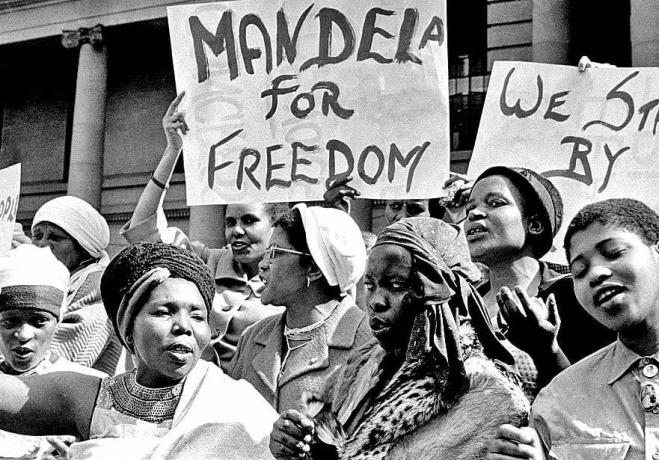the term Apartheid refers to the racial segregation regime that took place in South Africa between 1948 and 1994.
With the rise of the National Party, a racial policy that favored the white minority that held economic and political power in the country came into effect.
see more
Scientists use technology to unlock secrets in ancient Egyptian art…
Archaeologists discover stunning Bronze Age tombs in…
Composed of the white elite, the National Party dictated rules that had to be rigorously obeyed by the rest of the population — the immense black majority.
This reality changed after Nelson Mandela's rise to power in 1994, when the segregationist regime came to an end.
The policy of racial segregation was made official in 1948, with the rise of the New National Party to power.
The regime experienced a strengthening between the 1960s and 1970s, and, consequently, an intense opposition was present.
The Party invested in a system of repression and surveillance in order to maintain its government and the ideals of white racial superiority.
Marriages between white and black people were prohibited as well as sexual relations, which, if discovered, the individuals involved were punished with imprisonment.
Only the white elite held the highest positions in government and parliament. In the same way, the productive lands were under their control.
Blacks were cheap labor in industries, mines and farms. They could not move freely around the country, being controlled by numerous identification documents, safe-conducts and passes.
Bureaucracy was the way found by African leaders to control the movement of black men and women across the country.
The policy of racial segregation was present in the most varied spaces of coexistence in the South Africa. Bus stops and public transport were separated by skin color.
Parks, squares and beaches also delimited access points for the black population, as well as libraries, restaurants, bars and drinking fountains. Finally, all environments were marked by the cruelty of racial segregation.

South Africans did not passively accept such measures. They reacted in varying ways, which triggered the formation of the Union of South Africa.
Blacks began to have their main representative organization with the creation of the African National Congress (ANC), at the beginning of the 20th century.
In the 1920s, strikes were promoted with the participation of more than 40 thousand miners throughout South Africa. In the 1940s, more than 40 strikes were organized with the participation of more than 60,000 people.
However, with the rise of Apartheid, peaceful resistance was pushed aside, giving way to armed movements led by Nelson Mandela (1918–2013).
The Shaperville Massacre (1960) was marked by a protest against the law that forced black South Africans to use a booklet that delimited the places they could attend.
The episode had the participation of the police who shot at a group of five thousand people. It was the trigger for the beginning of resistance.
In 1976, the police react violently against a student protest in Johannesburg. In this repression, about 600 demonstrators were killed and 13,000 arrests were decreed.
The leader of the movement, Steve Biko, was tortured and killed. This South African action was heavily criticized and the country began to suffer pressure from the United Nations (UN). Thus, the 1980s are marked by a worldwide discredit that made South Africa lose high investments.
Nelson Mandela was the main reference of the fight against apartheid. He was arrested in 1962, and in 1964 he was sentenced to life in prison. He was detained until 1990.

After his release, he was elected president of South Africa in 1994, marking the end of the legality of racial segregation in the country.

Learn more at: